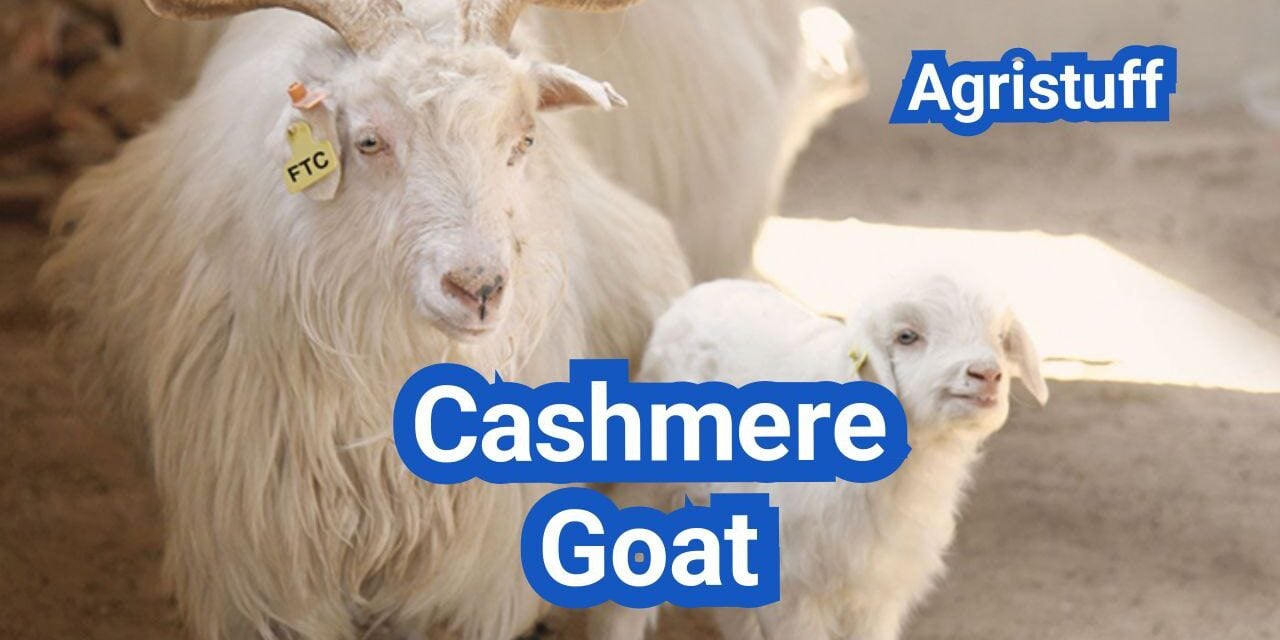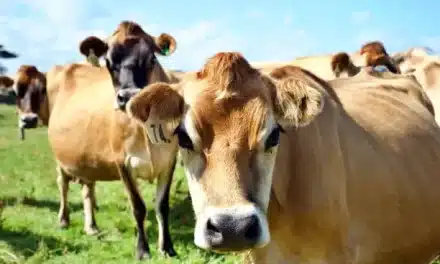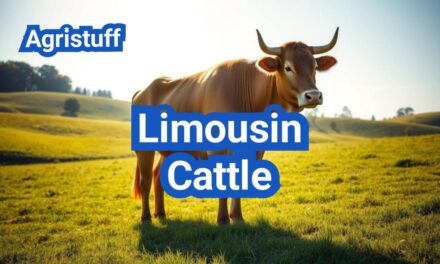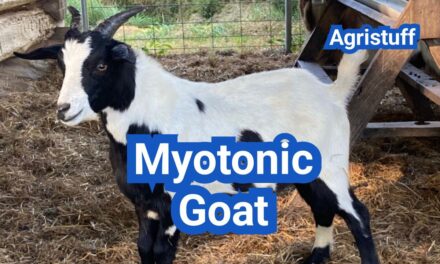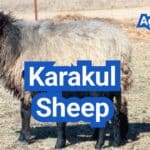The luxurious fiber produced by a specific type of goat has been a prized commodity for centuries, originating from the rugged terrains of the Himalayan region.
This particular breed has garnered significant attention due to its unique characteristics and the high quality of its fleece. The history and significance of these goats are deeply intertwined with the regions where they are bred.
Understanding the history, origin, and characteristics of this breed is crucial for appreciating the value of its luxurious fiber and the various uses it serves in the textile industry.
Key Takeaways
- The cashmere goat has a rich history tied to the Himalayan region.
- These goats are known for producing high-quality, luxurious fiber.
- The breed’s characteristics are crucial for its fleece production.
- Understanding the origin and history is key to appreciating its value.
- The textile industry highly values the fiber produced by these goats.
The Rich History of Cashmere Goats
For thousands of years, cashmere goats have been bred for their luxurious undercoat, with roots tracing back to ancient civilizations. The history of these goats is deeply intertwined with the cultural and economic development of the regions where they were first domesticated.
Ancient Origins of Cashmere Production
The origins of cashmere production date back to the Himalayan region, where cashmere goats were first bred for their fine fleece. The process of harvesting this fleece was labor-intensive and required great skill, contributing to the high value placed on cashmere products.
Cashmere production was not only a local industry but also played a significant role in international trade, with the fine fibers being highly sought after by merchants and traders along the Silk Road.
Evolution of Cashmere Goat Breeding Through Centuries
Over the centuries, the breeding of cashmere goats has evolved significantly. Initially, the focus was on producing goats with the finest and most abundant fleece. As trade and cultural exchange expanded, breeders began to adapt their practices to meet the changing demands of the market.
The evolution of cashmere goat breeding has been influenced by various factors, including geographical conditions, climate change, and advances in animal husbandry. Today, breeders continue to refine their techniques to produce high-quality cashmere while ensuring the health and well-being of the goats.
| Century | Breeding Practices | Market Demand |
|---|---|---|
| 14th-16th | Initial selective breeding for fine fleece | High demand for luxury textiles |
| 17th-19th | Expansion of breeding programs | Increased trade along the Silk Road |
| 20th-21st | Modernization of breeding techniques | Global demand for high-quality cashmere |
The history of cashmere goats is a testament to the enduring appeal of their luxurious fleece and the dedication of breeders to preserving and enhancing this valuable resource.
Geographic Origin and Global Distribution

With a history dating back thousands of years, cashmere goats are native to the harsh climates of Central Asia. The rugged terrains of this region have shaped these goats into hardy animals capable of withstanding extreme temperatures.
Native Regions in Central Asia
The Himalayan region, particularly areas in China, Mongolia, and parts of India, has been the traditional homeland of cashmere goats. These areas provide the ideal climate and terrain for the goats, with cold winters and cool summers allowing for the development of their luxurious fleece.
China is notably the largest producer of cashmere, with Inner Mongolia being a key region. The country’s vast expanses and varied climates have enabled the breeding of high-quality cashmere goats.
Spread to Other Parts of the World
Over time, cashmere goats have been introduced to other parts of the world, including Australia and the United States. These countries have seen the potential for cashmere production and have begun breeding programs to develop their own cashmere industries.
Australia, for instance, has become a significant player in the global cashmere market. The country’s climate varies greatly, and regions with colder winters have proven suitable for cashmere goat farming.
Current Global Distribution
Today, cashmere goats are found in various parts of the world, with major production centers in Asia and emerging industries in other regions. The adaptability of these goats to different climates has been a key factor in their global distribution.
The global cashmere industry is evolving, with new producers entering the market and existing ones expanding their operations. This trend is expected to continue as demand for cashmere products remains high.
Understanding the Cashmere Goat
Understanding the cashmere goat involves delving into its physical attributes, behavior, and lifespan. These goats are known for their luxurious soft undercoat and are generally small to medium-sized.
Physical Appearance and Size
Cashmere goats are characterized by their soft, fine undercoat and can vary in size. Typically, they range from 20 to 40 kg (44 to 88 lbs) in weight and stand between 60 to 80 cm (24 to 32 inches) tall at the shoulder.
Their coat is double-layered, consisting of a thick undercoat and a coarser outer layer. The undercoat is what gives cashmere its luxurious feel and is highly prized.
| Characteristic | Description |
|---|---|
| Weight | 20-40 kg (44-88 lbs) |
| Height | 60-80 cm (24-32 inches) |
| Coat | Double-layered: fine undercoat and coarser outer layer |
Temperament and Behavior
Cashmere goats are known to be intelligent and curious. They exhibit a range of temperaments, from docile to more aggressive, depending on their breeding and handling.
These goats are social animals and thrive in the company of other goats. They require adequate space to roam and forage.
Lifespan and Development
The average lifespan of a cashmere goat is between 8 to 12 years, depending on factors such as nutrition, health care, and breeding practices.
Cashmere goats develop relatively quickly, with kids born after a gestation period of about 150 days. The young goats are weaned after approximately 6 months.
| Development Stage | Age |
|---|---|
| Gestation Period | 150 days |
| Weaning | 6 months |
| Maturity | 1-2 years |
Different Types of Cashmere Goats

The diversity in cashmere goat breeds is a result of centuries of selective breeding in various parts of the world. These breeds have evolved to thrive in different environments, producing a range of cashmere qualities and characteristics.
Asian Breeds
Asian breeds, such as the Changthangi or Pashmina goat found in the Himalayan regions, are renowned for their fine cashmere production. These goats have adapted to the harsh, high-altitude climates of countries like India, Nepal, and Mongolia.
Inner Mongolia cashmere goats are another significant breed, known for their high-quality cashmere. They are well adapted to the cold, dry climates of northern China and Mongolia.
North American Cashmere Goats
North American cashmere goats have been developed by cross-breeding Asian breeds with local goats to adapt to the regional climate. These goats are found primarily in the United States and Canada, where they are valued for their cashmere production.
Farmers in North America have selectively bred these goats to improve their cashmere yield and quality, making them a valuable part of the local textile industry.
Australian Cashmere Goats
Australian cashmere goats represent another distinct group, bred to thrive in the country’s unique climate conditions. Australian farmers have focused on developing goats that can produce high-quality cashmere while withstanding the local environmental challenges.
Each of these breeds contributes to the rich tapestry of global cashmere production, offering unique qualities that cater to different market demands.
The Unique Fiber of Cashmere Goats
The cashmere goat’s fleece is highly prized for its exceptional softness, warmth, and lightweight properties. This unique fiber has been a cornerstone of luxury textile production for centuries, with its characteristics making it highly sought after in the fashion industry.
What Makes Cashmere Special
Cashmere fiber is considered special due to its fine diameter, typically measuring between 14 and 16 microns. This fineness, combined with its softness and warmth, makes it ideal for producing high-quality garments that are both comfortable and durable.
The unique properties of cashmere fiber are a result of the goat’s adaptation to the harsh climates of its native regions. The fiber’s crimped texture allows it to trap warm air, providing excellent insulation against cold temperatures.
Fiber Characteristics and Quality Standards
The quality of cashmere fiber is determined by several factors, including its length, color, and cleanliness. Longer fibers are generally considered to be of higher quality as they are less prone to breakage during processing.
Cashmere quality standards also take into account the color of the fiber, with white cashmere being highly valued for its versatility in dyeing. The cleanliness of the fiber, which is affected by the presence of guard hairs and impurities, is another critical factor in determining its quality.
Average Yield per Goat
The average yield of cashmere fiber per goat varies significantly depending on factors such as breed, nutrition, and management practices. On average, a cashmere goat produces between 150 to 200 grams of raw cashmere per year.
Selective breeding programs have been implemented to improve the yield and quality of cashmere fiber. These programs focus on enhancing the goat’s genetic potential for producing finer, longer, and more abundant cashmere.
Starting a Cashmere Goat Farm: Step-by-Step Guide

Embarking on the journey of starting a cashmere goat farm requires meticulous planning and a thorough understanding of the initial steps involved. This guide will walk you through the essential elements to consider when establishing your farm.
Land and Infrastructure Requirements
The first step in starting a cashmere goat farm is to ensure you have suitable land and infrastructure. Cashmere goats require spacious areas for grazing and exercise. The land should be well-fenced to protect the goats from predators and prevent them from escaping. A minimum of 1-2 acres per 5-10 goats is recommended, depending on the quality of the pasture.
The infrastructure should include shelter for the goats, which protects them from extreme weather conditions. The shelter should be well-ventilated, dry, and draft-free. Additionally, you will need equipment such as feeding troughs, watering systems, and fencing materials.
Initial Investment and Costs
Starting a cashmere goat farm involves significant initial investment. The costs include purchasing the initial herd, land preparation, infrastructure development, and equipment. The average cost of a cashmere goat can range from $500 to $2,000, depending on the breed and quality.
Other expenses to consider are veterinary care, feeding, and labor costs. It’s essential to create a detailed budget to understand the total investment required and to plan for ongoing expenses.
Selecting Your First Herd
Selecting the right herd is crucial for the success of your cashmere goat farm. Look for high-quality cashmere goats with good genetics and fiber production. Consider factors such as the goat’s health, temperament, and adaptability to your local climate.
It’s advisable to start with a small herd and gradually expand as you gain experience and your farm becomes more established. Consulting with experienced breeders can provide valuable insights into selecting the best animals for your farm.
Legal Considerations and Permits
Before starting your cashmere goat farm, it’s essential to comply with all legal requirements and obtain necessary permits. This includes zoning regulations, business registration, and any specific permits related to goat farming in your area.
Consulting with local authorities and agricultural experts can help you navigate the legal landscape and ensure that your farm is compliant with all regulations.
Housing and Facility Requirements

The housing and facility requirements for cashmere goats are critical components of a successful farming operation. Providing appropriate shelter, fencing, and equipment is essential for maintaining the health and productivity of these animals.
Shelter Design for Different Climates
Cashmere goats require shelter that protects them from extreme weather conditions, including high temperatures, cold, wind, and precipitation. The design of the shelter should be adapted to the local climate.
In colder climates, shelters should be well-insulated and draft-free to keep the goats warm. Ventilation is also crucial to prevent the buildup of moisture and reduce the risk of respiratory problems. In warmer climates, shelters should provide shade and be designed to maximize airflow, helping to keep the goats cool.
Fencing and Predator Protection
Effective fencing is vital for protecting cashmere goats from predators such as coyotes, wolves, and dogs. The fencing should be at least 6 feet tall and made of durable materials like high-tensile wire or woven wire. Electric fencing can also be used as an additional deterrent.
In areas with high predator pressure, additional measures such as guard animals (e.g., donkeys, llamas) or surveillance systems may be necessary to enhance security.
Equipment Essentials
Several pieces of equipment are essential for the daily care of cashmere goats. These include feeding troughs, watering systems, and handling facilities. The feeding troughs should be designed to minimize waste and prevent the goats from standing in the feed.
Handling facilities, such as chutes and cradles, are necessary for tasks like vaccinations, hoof trimming, and combing for cashmere fiber. These facilities should be safe and comfortable for both the goats and the handlers.
By investing in appropriate housing and facilities, cashmere goat farmers can improve the health, welfare, and productivity of their animals, ultimately enhancing the profitability of their operation.
Nutrition and Feeding Management

The nutritional requirements of cashmere goats are a critical aspect of their care, impacting both their health and the quality of their cashmere. Effective nutrition management is essential for maintaining the overall well-being of the goats and optimizing cashmere production.
Basic Nutritional Needs
Cashmere goats require a balanced diet that includes adequate amounts of protein, energy, vitamins, and minerals. Protein is particularly important for cashmere production, as it is necessary for the growth and development of the cashmere fibers. A diet rich in nutrients supports the goats’ overall health and enhances the quality of the cashmere.
The basic nutritional needs of cashmere goats can be met through a combination of grazing and supplementary feeding. High-quality hay, such as alfalfa or clover, can provide essential nutrients, while grains like oats or barley can be used to supplement energy needs.
Seasonal Feeding Adjustments
The nutritional needs of cashmere goats vary with the seasons. During the winter months, when grazing is limited, it’s crucial to provide additional feed to maintain their nutritional requirements. Conserved forages like hay or silage can be used to supplement the lack of fresh grazing.
In contrast, during the spring and summer, when pasture is lush, cashmere goats can obtain a significant portion of their nutritional needs through grazing. However, it’s still important to monitor their condition and adjust supplementary feeding as necessary to ensure they receive a balanced diet.
Water Requirements
Access to clean, fresh water is essential for the health and productivity of cashmere goats. Water intake can vary based on factors such as diet, climate, and level of activity. Ensuring that goats have unlimited access to clean water is crucial, especially during hot weather or when they are being fed dry feed.
By understanding and meeting the nutritional needs of cashmere goats, farmers can improve the health and productivity of their animals, ultimately enhancing the quality and quantity of cashmere produced.
Breeding and Reproduction

The success of a cashmere goat farm largely depends on effective breeding and reproduction management. This involves understanding the intricacies of the breeding season, implementing selective breeding practices, and providing proper care during kidding and postpartum periods.
Breeding Season and Cycles
Cashmere goats typically breed in the fall, with the breeding season lasting several months. The breeding season is influenced by factors such as daylight hours, temperature, and nutrition. Farmers need to plan accordingly to ensure that kidding occurs at the most favorable time of the year.
The estrous cycle in cashmere goats is approximately 21 days, with a gestation period of about 150 days. Understanding these cycles is crucial for effective breeding and reproductive management.
Selective Breeding for Fiber Quality
Selective breeding is a critical practice in cashmere goat farming, aimed at improving fiber quality and production. Farmers select goats with desirable traits such as finer fibers, higher yield, and better color. This process involves careful record-keeping and genetic planning to achieve the desired outcomes.
The goal of selective breeding is to enhance the overall quality of the herd, making the farm more productive and profitable. It requires a deep understanding of genetics and the specific characteristics of cashmere goats.
Kidding and Postpartum Care
The kidding process is a critical period that requires careful monitoring and assistance when necessary. Newborn kids need immediate care, including ensuring they receive colostrum, the first milk from the mother, which is rich in antibodies.
Postpartum care for both the doe and kids is essential. This includes monitoring the health of the doe, ensuring proper nutrition, and providing a clean, safe environment for the kids to grow. Proper care during this period significantly impacts the survival rate and health of the kids.
By focusing on these aspects of breeding and reproduction, cashmere goat farmers can improve the productivity and profitability of their farms. Effective management practices during breeding, kidding, and postpartum periods are crucial for the overall success of the farm.
Health Management and Common Issues

Maintaining the health of cashmere goats is crucial for their well-being and productivity. Effective health management involves a combination of preventative care, vaccinations, parasite control, and prompt treatment of diseases.
Vaccinations and Preventative Care
Regular vaccinations are a critical component of cashmere goat health management. Vaccines protect against diseases such as Clostridium perfringens and tetanus. A typical vaccination schedule includes:
- Initial vaccinations for kids
- Booster shots as recommended by a veterinarian
- Annual vaccinations for the entire herd
In addition to vaccinations, regular health checks help identify potential issues early. This includes monitoring for signs of illness, injury, or stress.
Parasite Control
Parasite control is essential for maintaining the health of cashmere goats. Internal parasites, such as gastrointestinal nematodes, can significantly impact goat health. Strategies for parasite control include:
- Regular fecal egg counts to monitor parasite loads
- Strategic deworming programs tailored to the farm’s specific needs
- Pasture management techniques to reduce parasite exposure
Common Diseases and Treatment
Cashmere goats are susceptible to various diseases, including pneumonia, parasites, and reproductive issues. Prompt diagnosis and treatment are crucial. Common treatments include:
- Antibiotics for bacterial infections
- Anti-parasitic medications
- Supportive care, such as nutritional supplements and hydration
A well-structured health management plan helps minimize the risk of disease and ensures the overall health and productivity of the cashmere goat herd.
Harvesting and Processing Cashmere

Harvesting cashmere from goats is a labor-intensive process that demands attention to detail and a gentle touch. The quality of the cashmere fiber is directly related to how it is harvested and processed.
Combing vs. Shearing Methods
There are two primary methods used for harvesting cashmere: combing and shearing. Combing involves using a fine-toothed comb to gently remove the cashmere fibers from the goat’s undercoat, typically during the molting season. This method is preferred for its ability to produce high-quality fibers without causing damage.
Shearing, on the other hand, involves cutting the fleece close to the skin, similar to shearing sheep. While this method is faster, it can result in a mixture of cashmere and coarser guard hairs, requiring more processing to separate the fibers.
- Combing is generally considered superior for cashmere production due to its ability to selectively remove the fine undercoat.
- Shearing is faster but may result in a lower quality fiber if not properly processed.
Timing and Frequency
The timing and frequency of cashmere harvesting depend on factors such as the breed of goat, climate, and geographical location. Typically, cashmere goats are combed or sheared once a year, during the spring when the goats naturally shed their winter coats.
- The molting season, usually in late winter to early spring, is the best time for combing or shearing.
- Some farms may adopt a twice-yearly harvesting schedule, depending on the specific conditions and the goats’ health.
Processing Raw Fiber
After harvesting, the raw cashmere fiber undergoes several processing stages to become the luxurious fabric known for its softness and warmth. The processing involves sorting, cleaning, carding, and spinning the fibers.
- Sorting involves grading the fibers by quality and color.
- Cleaning removes dirt, oil, and other impurities from the fibers.
- Carding aligns the fibers in the same direction, producing a rope-like strand called a sliver.
- Spinning transforms the sliver into yarn, which can then be woven or knitted into cashmere products.
By understanding the intricacies of harvesting and processing cashmere, producers and consumers alike can appreciate the value and craftsmanship that goes into creating high-quality cashmere products.
Economic Value and Market Opportunities
The economic potential of cashmere goat farming is substantial, driven by current market trends and consumer demand. As the luxury fiber market continues to grow, farmers and investors are recognizing the value of cashmere goat farming as a profitable venture.
Current Market Trends
The global cashmere market is influenced by various factors, including fashion trends, consumer preferences, and economic conditions. Currently, there is a growing demand for sustainable and ethically sourced cashmere products, driving the market towards more responsible production practices. Market trends indicate a shift towards transparency and sustainability in the cashmere industry, with consumers willing to pay a premium for high-quality, responsibly sourced cashmere.
Pricing and Profit Potential
Pricing for cashmere fiber is determined by factors such as quality, color, and length of the fiber. High-quality cashmere commands a premium price, making it a lucrative product for farmers who can produce it. The profit potential for cashmere goat farming is significant, especially for those who can market their products directly to consumers or establish relationships with high-end fashion brands.
Selective breeding and careful management of cashmere goats can lead to higher quality fiber, thereby increasing the potential for profit. Farmers can also add value to their products by processing the raw fiber into finished goods such as scarves, hats, and sweaters.
Direct Marketing vs. Wholesale
Farmers have two primary options for selling their cashmere products: direct marketing and wholesale. Direct marketing allows farmers to sell their products directly to consumers, either online or through local markets, thereby retaining a larger share of the profit. Wholesale involves selling raw fiber or finished products to manufacturers or retailers, who then sell them to consumers.
Direct marketing can offer higher profit margins, but it requires significant investment in marketing and sales efforts. Wholesale, on the other hand, can provide a more stable and predictable income stream, but at a lower profit margin per unit.
Is Cashmere Goat Farming Right for You?
Cashmere goat farming is a complex venture that requires careful consideration of various factors, including climate, market demand, and management practices. As discussed, the history, origin, and characteristics of cashmere goats play a crucial role in determining the success of such a farm.
To determine the suitability of cashmere goat farming for your operation, you must assess your resources, expertise, and goals. This includes evaluating the land and infrastructure requirements, initial investment, and ongoing costs associated with managing a cashmere goat farm.
By understanding the unique aspects of cashmere goat farming, such as breeding, nutrition, and health management, you can make an informed decision about whether this venture aligns with your objectives. With the right approach and knowledge, cashmere goat farming can be a rewarding and profitable endeavor.
FAQ
What is the origin of cashmere goats?
Cashmere goats originated in the mountainous regions of Central Asia, including countries such as China, Mongolia, and India.
What makes cashmere fiber so special?
Cashmere fiber is renowned for its softness, warmth, and lightweight properties, making it a highly prized luxury material.
How much cashmere fiber does a goat produce on average?
The average yield of cashmere fiber per goat varies, but it typically ranges from 100 to 200 grams per year, depending on factors like breed, nutrition, and health.
What are the key characteristics of cashmere goats?
Cashmere goats are known for their hardiness, adaptability, and gentle nature. They come in various sizes and colors, and are characterized by their thick undercoat, which is the source of cashmere fiber.
How do you start a cashmere goat farm?
Starting a cashmere goat farm requires careful planning, including selecting the right land, infrastructure, and initial herd. It’s also crucial to understand the legal considerations and obtain necessary permits.
What are the nutritional needs of cashmere goats?
Cashmere goats require a balanced diet that includes high-quality hay, grains, and minerals. Their nutritional needs vary by season, and access to clean water is essential.
How are cashmere goats bred for better fiber quality?
Selective breeding is used to improve the quality of cashmere fiber. This involves choosing goats with desirable traits, such as finer fiber and higher yield, to breed for the next generation.
What health issues are common in cashmere goats?
Cashmere goats are susceptible to various health issues, including parasites, diseases, and nutritional deficiencies. Regular preventative care, vaccinations, and monitoring are crucial for maintaining their health.
How is cashmere harvested and processed?
Cashmere is typically harvested through combing or shearing, depending on the method preferred by the farmer. The raw fiber is then processed to remove impurities and sorted by quality before being spun into yarn or made into garments.
Is cashmere goat farming profitable?
The profitability of cashmere goat farming depends on several factors, including the size of the operation, the quality of the fiber produced, market trends, and the ability to effectively market the product.
What are the advantages of direct marketing cashmere products?
Direct marketing allows farmers to sell their products directly to consumers, potentially increasing profit margins by cutting out intermediaries and allowing for more control over pricing and branding.
Can cashmere goats be raised in different climates?
Yes, cashmere goats are adaptable to various climates, but their housing and care need to be adjusted accordingly to protect them from extreme temperatures and weather conditions.
Conclusion of: Cashmere Goat Breed
Introduction to the Cashmere Goat
The Cashmere Goat is known worldwide for producing one of the softest and most valuable natural fibers on earth, making it a premium source for luxury sweaters, scarves and high-end knitwear. In practice, the term Cashmere Goat describes any goat that grows a fine undercoat that meets cashmere standards, typically averaging 19 microns or less in fiber diameter.
For farmers and homesteaders in the United States, the Cashmere Goat offers a unique opportunity: a hardy grazing animal that can thrive on rough terrain while producing small but high-value quantities of fiber each year. When combined with meat production, brush control and direct marketing, the Cashmere Goat can fit comfortably into diversified farm businesses that seek both resilience and added income. Learn more about the origin of the Kashmir (Cashmere) goat
History and Origin of the Cashmere Goat
The story of the Cashmere Goat begins in the cold, high-altitude regions of the Himalayas and Central Asia, especially in the historical region of Kashmir. The name “cashmere” is derived from “Kashmir,” reflecting the early production of luxurious shawls from the undercoat of the Cashmere Goat in India and surrounding areas.
Traders carried precious cashmere textiles along historic trade routes into Europe, where the extraordinary warmth and softness of Cashmere Goat fiber quickly gained a reputation among royalty and the upper classes. Over the last century, the Cashmere Goat has spread far beyond its original homeland, with breeding programs in countries like Australia, New Zealand and the United States focusing on improving fiber quality, color and yield while preserving the hardiness of the original Cashmere Goat populations. Read a detailed history of the Cashmere Goat
Global Distribution and Main Cashmere Goat Types
Today, the Cashmere Goat is raised across a broad band of dry and semi-arid rangelands, particularly in China, Mongolia, Afghanistan, Iran, India and parts of Pakistan. In these regions, the cold winters stimulate the dense undercoat growth that makes the Cashmere Goat so valuable to textile industries. China and Mongolia now dominate global raw cashmere production, exporting most of the fiber that is later spun and woven into high-value garments.
Within these countries, herds may be described by local strain or region rather than a single uniform Cashmere Goat breed, but they share key traits such as fine undercoat, good adaptation to harsh climates and efficient use of sparse vegetation. As cashmere demand continues worldwide, more farmers in Europe and North America are establishing Cashmere Goat herds to serve niche fiber, craft and hand-spinner markets. FAO overview of global cashmere production and Cashmere Goat systems
Physical Characteristics of the Cashmere Goat
The typical Cashmere Goat is a medium-sized, strong and agile animal with a distinctive double coat. The outer layer is made up of coarse guard hairs that protect the Cashmere Goat from wind, rain and snow, while the inner layer is the fine, soft undercoat that becomes cashmere fiber. A Cashmere Goat can be white, cream, brown, gray or black, but white fleeces are often preferred by processors because they can be dyed into the widest range of colors.
Many Cashmere Goat animals have curved horns and an alert, active temperament, well suited to browsing shrubs and brush. The fine structure of the Cashmere Goat undercoat traps warm air close to the skin, giving garments made from this fiber a remarkable warmth-to-weight ratio and a soft, luxurious feel that is difficult to match with synthetic materials. See more technical details about cashmere fiber characteristics
Cashmere Goat Fiber Qualities and Yield
The defining feature of the Cashmere Goat is its undercoat, which is classified as cashmere when it meets strict quality criteria. Industry standards generally require that Cashmere Goat fiber have an average diameter of 19 microns or less, with high-end garments often using fiber around 14–16 microns for exceptional softness.
In addition to fineness, the length, strength and color of the fiber influence the value obtained from each Cashmere Goat. Despite its high value, annual yield per Cashmere Goat is relatively low: after dehairing, a single animal may provide only 150–200 grams of pure cashmere in a year. This low yield per Cashmere Goat is one of the main reasons why true cashmere garments command premium prices and why careful selection, testing and culling are so important in Cashmere Goat breeding programs. Explore technical information on cashmere fibres from DNFI
Housing and Environment Needs of the Cashmere Goat
Thanks to its double coat, the Cashmere Goat is naturally adapted to cold climates and can tolerate harsh outdoor conditions better than many other livestock species. In many regions, a Cashmere Goat flock can live comfortably with only basic shelter such as a three-sided shed or windbreak, as long as goats have a dry place to rest and protection from prolonged wet weather.
In the United States, good Cashmere Goat management still includes providing shade in hot conditions, dry bedding in winter and secure fencing that can withstand curious goats. Because the undercoat of the Cashmere Goat is sensitive to moisture and dirt, farmers try to avoid deep mud and overcrowding, which can damage fiber quality. Proper ventilation, clean lying areas and protection from predators all contribute to healthy, low-stress housing for the Cashmere Goat. Oklahoma State factsheet on Cashmere Goats and basic management
Feeding and Nutrition for the Cashmere Goat
Like other goats, the Cashmere Goat is primarily a browser, preferring shrubs, weeds and a wide variety of plants rather than just short grass. A well-managed pasture system that includes brushy areas can support a productive Cashmere Goat herd while also helping control unwanted vegetation. For best results, the Cashmere Goat should receive a balanced diet that meets its energy, protein, vitamin and mineral needs, with higher levels provided to pregnant does, lactating does and growing kids.
Rotational grazing can help maintain forage quality and reduce parasite pressure on the Cashmere Goat, especially in humid climates. During winter or drought, high-quality hay and a suitable mineral mix keep the Cashmere Goat in good body condition, which is vital for both reproduction and fiber production. Extension guide to nutrition for goats, applicable to Cashmere Goat herds
Breeding and Reproduction in Cashmere Goat Herds
The Cashmere Goat follows the same basic reproductive cycle as other goats, with most breeds being seasonally polyestrous and coming into heat in the fall. After mating, the gestation period of the Cashmere Goat is about 150 days, resulting in kids born in late winter or spring in many production systems. Litter sizes in a Cashmere Goat herd typically range from singles to twins, with triplets possible depending on genetics and nutrition.
Because fiber traits are highly heritable, breeders pay close attention to fleece test results when selecting Cashmere Goat bucks and does for their breeding programs. Recordkeeping on kidding performance, mothering ability, growth rates and fiber quality allows Cashmere Goat producers to steadily improve their herds and focus on animals that combine strong health with fine, abundant undercoats. General reproduction and health reference for goats (UC ANR)
Health and Welfare Management in the Cashmere Goat
Maintaining good health in the Cashmere Goat is essential for ethical production and consistent fiber yields. Parasites, foot problems and respiratory diseases can all reduce the productivity of a Cashmere Goat herd if not controlled through sound management.
Preventive care for the Cashmere Goat typically includes vaccination, regular fecal egg counts, strategic deworming and hoof trimming, along with prompt treatment of sick animals. In recent years, attention has also turned to welfare standards and responsible sourcing of cashmere, with initiatives that require humane handling, gentle combing or shearing practices and careful land management. These programs encourage Cashmere Goat producers to adopt clear protocols for animal care, which can improve both fiber quality and market access. Read the Good Cashmere Standard for responsible Cashmere Goat welfare
Cashmere Harvesting and Processing from the Cashmere Goat
Harvesting fiber from the Cashmere Goat requires planning and careful timing. As days begin to lengthen after winter, the undercoat of the Cashmere Goat loosens naturally and can be removed either by combing or by shearing. Many small-scale producers prefer hand combing, which selectively removes the soft undercoat while leaving much of the guard hair behind, resulting in cleaner fiber and less work for later dehairing.
Other Cashmere Goat operations shear the whole fleece and then rely on mechanical equipment to separate fine undercoat from coarse hair. After harvest, the cashmere from each Cashmere Goat is classed and graded by fineness, length and color before being scoured, dehaired, carded and spun into yarn. Proper storage and gentle handling at every stage protect the value of the fiber produced by the Cashmere Goat. Extension article on Cashmere Goat breeds and fiber harvesting
Economic Importance of the Cashmere Goat and Global Markets
Even though each individual Cashmere Goat produces only a small amount of undercoat, cashmere is one of the most valuable animal fibers in the world. Global production from the Cashmere Goat is modest compared with wool or cotton, but the high price per pound and the strong demand from luxury textile brands give the fiber major economic importance. China and Mongolia supply most of the raw cashmere entering international trade, but small, high-quality Cashmere Goat producers in Europe, North America and other regions sell fiber and yarn into niche markets at premium prices.
For U.S. farmers, a well-managed Cashmere Goat flock can generate revenue not only from raw fiber but also from value-added products such as hand-spun yarn, finished garments and agritourism experiences that showcase the goats themselves. FAO report on wool and cashmere markets
Cashmere Goat vs. Other Goat Breeds for Fibre and Meat
When comparing the Cashmere Goat to other goat breeds, the main distinction is the emphasis on fine fiber rather than on milk or rapid weight gain. Dairy goats, such as Saanen, Alpine or Nubian, are bred to produce large volumes of milk, while meat goats like Boer or Kiko are selected for growth rate and carcass traits. The Cashmere Goat, in contrast, is managed primarily for its soft undercoat, although many herds produce meat as a secondary product.
Fiber scientists point out that there is considerable variation even within the Cashmere Goat population, meaning that selecting for fineness, length and fleece weight can significantly improve returns. On small farms, a dual-purpose approach often makes sense, with the Cashmere Goat providing both usable meat and valuable fiber from the same animals. Compare cashmere with other animal fibres in this technical factsheet
Raising Cashmere Goat on Small Farms in the United States
For homesteaders and small-scale farmers, the Cashmere Goat can be an appealing addition to a diversified enterprise. The North American Cashmere Goat type is defined by standards that focus on fiber quality, conformation and hardiness, helping producers identify true Cashmere Goat stock for breeding. Many U.S. farmers market raw fleece, washed fiber, roving and hand-spun yarn directly to knitters and spinners, capturing more value from each Cashmere Goat than they would from commodity sales alone.
Because the Cashmere Goat can thrive on rough terrain and browse brushy areas, it can also play a useful role in land management and fire-risk reduction. Combining thoughtful breeding, flock health, strategic grazing and strong customer relationships allows the Cashmere Goat to contribute both profit and ecological benefits on small American farms. Review the North American Cashmere Goat breed standard
Sustainability, Welfare and the Future of the Cashmere Goat
In recent years, the global Cashmere Goat industry has faced increasing scrutiny over land degradation, overgrazing and animal welfare in some rangeland systems. As a result, brands and organizations are working with herders and farmers to promote more sustainable and responsible management of the Cashmere Goat.
Programs that emphasize rotational grazing, appropriate stocking rates and habitat protection help protect fragile grasslands and wildlife while maintaining productivity from the Cashmere Goat. At the same time, welfare standards require gentle handling, humane combing or shearing, adequate nutrition and veterinary care for every Cashmere Goat in certified operations. These initiatives give consumers greater confidence that garments made from Cashmere Goat fiber respect people, animals and ecosystems throughout the supply chain. Learn how sustainability programs support ethical cashmere production
Final thought
Ultimately, the Cashmere Goat represents a powerful example of how a small ruminant can transform tough landscapes into high-value products that bring warmth and comfort to people around the world. By understanding the history, biology, husbandry and markets that shape the Cashmere Goat industry, farmers and consumers alike can make more informed, ethical choices. For American homesteaders, adding a carefully selected Cashmere Goat flock can create a blend of beauty, practicality and economic resilience on the farm. For conscious buyers, seeking garments that trace their roots back to well-managed Cashmere Goat systems is a meaningful way to support responsible agriculture and rural livelihoods. Read more about what makes cashmere from the Cashmere Goat unique
Sources & References
- Encyclopaedia Britannica – Kashmir (Cashmere) goat
- Wikipedia – Cashmere goat
- Wikipedia – Cashmere wool
- Oklahoma State University – Cashmere Goats
- Goats Extension – Cashmere goat breeds
- Goats Extension – Goat nutrition
- UC ANR – Goat health and reproduction guide (PDF)
- FAO – Harvesting of textile animal fibres, cashmere section
- FAO – Wool and cashmere markets (PDF)
- DNFI – Cashmere fibres
- DNFI – Animal fibres factsheet
- Cashmere Goat Association – North American Cashmere Goat breed standard
- The Good Cashmere Standard – Animal welfare guideline (PDF)
- Sustainable Fibre Alliance – Ethical cashmere initiatives
- Sustainable Fibre Alliance – What makes cashmere, cashmere?

